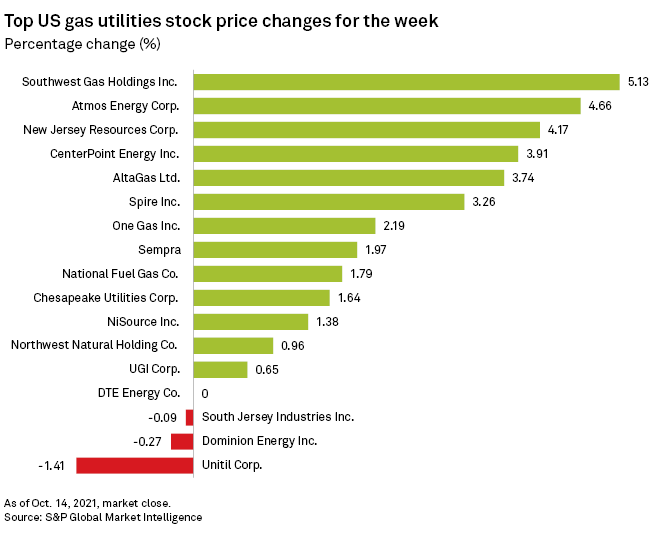
Natural gas utilities in the U.S. are working to find their niche in the clean energy transition amid increasing scrutiny as national, state and federal regulators tackle emissions in the industry through new rules and stricter project reviews.
For instance, utilities have announced at least 26 hydrogen pilot projects in the past year as the industry works out how to make and transport the gas, as well as help customers migrate to the low-carbon fuel.
Subsidiaries of utility holding company Sempra lead the way with 12 projects, ahead of a number of other major utilities with one or two projects each, according to a review by S&P Global Market Intelligence. Most of the projects are in West and East Coast states with ambitious climate targets and more than half involve hydrogen production, particularly green hydrogen. Several projects also seek to understand hydrogen's impact on end-use appliances or explore using the fuel for power generation.
Pilot projects ensure that "when we go to our regulators or other stakeholders to make a very large investment, we've got them familiar with this technology and the application of it," said Kim Heiting, senior vice president of operations and chief marketing officer at Oregon utility operator Northwest Natural Holding Co. The pilots will help utilities overcome challenges posed by the shift to hydrogen before they commit to hugely expensive full-scale rollouts.
These pilots form gas utilities' contribution to larger efforts to curb climate change, both in the U.S. and globally. Recently, 24 countries decided to join the U.S. and the European Union in a Sept. 17 pledge to slash global methane emissions by at least 30% below 2020 levels by the end of the decade with the goal of limiting global warming to 1.5 degrees C, according to an Oct. 11 news release.
Seven countries — Argentina, Ghana, Indonesia, Iraq, Italy, Mexico and the United Kingdom — had shown support for the pledge at the U.S.-led Major Economies Forum on Energy and Climate. With the 24 additional countries, nine of the top 20 methane emitters will now be part of the pledge, representing about a third of global methane emissions and about two-thirds of the world economy.
Back in the U.S., Colorado regulators have set in motion an overhaul of natural gas utility regulations — advancing an ongoing inquiry into the gas grid's future in the state as policymakers work to meet ambitious climate goals.
The Colorado Public Utilities Commission recently proposed substantial revisions to the state's gas utility regulations that aim to reduce the sector's greenhouse gas emissions and align infrastructure planning with statewide emissions reductions goals. (21R-0449G) The proposed rulemaking kicks off a yearlong process of soliciting feedback from gas distributors and other stakeholders.
The outcome of that process stands to determine the trajectory of gas use in homes, workplaces and industrial facilities in Colorado, one of several states reviewing the fuel's role in a decarbonized future. The rulemaking also ties together several proceedings and "will be comprehensive and at the forefront of the evolution of the gas utility industry," the PUC said in an Oct. 1 filing.
Climate change concerns have also begun shaping federal regulatory decisions, with the Federal Energy Regulatory Commission issuing the final version of an expanded environmental review for an Adelphia Gateway LLC natural gas pipeline project as part of the agency's effort to take a harder look at climate change in permitting decisions. The review could pave the way for approval by the commission after agency staff found that direct emissions from the project would be small.
FERC, which is split between two Democrats and two Republicans, remains divided on the issue of how the commission should take climate into account in deciding whether to authorize gas infrastructure projects. Despite the deadlock, FERC has approved some gas projects in recent months after determining that emissions were clearly not significant.
In the case of Adelphia's Marcus Hook electric compression project (CP21-14), FERC staff described operational emissions associated with the project as "very minor," primarily resulting from fugitive emissions that the developer planned to mitigate through preventative maintenance and other means. The FERC environmental impact statement issued Oct. 5 said these emissions would be about 369 tonnes per year of CO2 equivalent.



